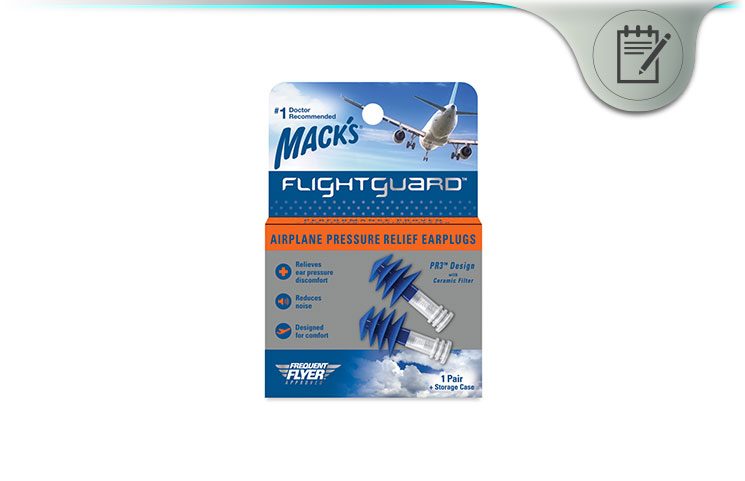A majority of us cannot refute the fact that we find flights quite fascinating, save for the mildly annoying displeasure of ear discomfort especially when flying in poorly pressurized cabins.
So, the news that there is finally a lasting solution to this is music to some of our ears. These Flightguard Airplane Pressure Ear Relief Plugs are not only laboratory tested but also physically proven to relieve that annoying (and, at times painful) ear pressure that frequent flyers experience every once in a while.
How Do Mack's Flightguard PR3 Airplane Pressure Relief Ear Plugs Help?
These earplugs boast of a unique PR3 complete with a fitting ceramic filter that is scientifically proven via a series of numerous lab tests to reduce air pressure. What's more, these plugs have been proven in more than hundreds of dozens of flights and passed all quality checks with admirable distinction.
Apart from relieving pressure from your sensitive eardrum, the plugs also cut out the exceedingly loud noise and din from the airplane engines thereby affording you a relaxing, noise-free flight.
As far as then features are concerned, the plugs boast of super soft flanges that are backed by a firm stem that not only ensures an immense degree of superior comfort supported by a great ease-of-use.
The manufacturer also went a step further to make sure that the package had a travel case as a worthy addition to the convenience of owning one of this. And in case you're wondering, the plugs are capable of muffling around 26 decibels of noise. In other words, they have an NRR ( Noise Reduction Ratio ) of approximately 26 decibels.

Directions For Using Mack's Flightguard PR3 Airplane Pressure Relief Ear Plugs
Mack's Flightguard PR3 Airplane Pressure Relief Ear Plugs are primarily meant to decrease/ease pressure on the eardrum. The noise muffling is just an added advantage and ought to be viewed as such. That implies that you have to follow the directions of use to the letter.
Therefore, before inserting them, close your mouth and pinch your nose slightly to equalize the pressure exerted on the eardrum. Also, it is recommended that you should insert the earplugs just before takeoff and remember to remove them after landing, for the best results.
In Closing
It is advisable to remove the earplug slowly in a twisting motion to slowly break the air seal that protects your eardrum. Immediate removal of the plug only predisposes your ultra-sensitive eardrum from drastic pressure changes.
Again, avoid pushing the earplug so far into the ear such that you're unable to grasp the plug's stem between the forefinger and the thumb when removing it.









